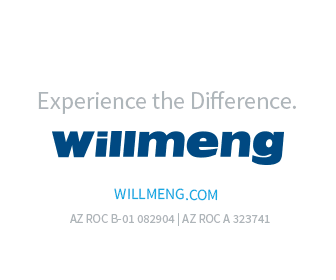Opportunity Zone Updates: 2020 and Beyond

Recent clarifications didn’t significantly change the law, but investors should be aware of these modifications.
The 2017 Tax Cuts and Jobs Act introduced tax benefits to incentivize investment in specially designated zones (Qualified Opportunity Zones, or QOZs) in all 50 states, the District of Columbia and five U.S. territories. The Opportunity Zone laws generated buzz because, among other benefits, they allowed qualified projects held for at least 10 years to exclude capital gains upon sale.
After more than two years, it is time to consider the state of the law, the response of the investment community and some of the ways Opportunity Zone investment activity might develop in the years ahead.
The Law
The Opportunity Zone law offers incentives to investors making certain qualifying equity investments before mid-year 2027. These investments must be made within 180 days after a sale or exchange of property that generates capital gains. The absence of recently realized capital gains does not preclude participating in Opportunity Zone investments as an advisor, developer or even as a regular equity investor. However, if these parties do not make equity investments after gains have been generated, they will not qualify for the Opportunity Zone tax benefits.
The substantial-improvement requirement is another Opportunity Zone rule that keeps many real estate investors on the sidelines. It stipulates that real estate investments seeking to benefit from the QOZ tax incentives must begin significant construction or renovation within a relatively short period of time. For example, if a property is purchased for $9 million with a building value of $6 million and land value of $3 million, the developer must invest at least $6 million in improvements within 30 months of acquisition, subject to certain allowances for unforeseen delays. While making substantial improvements in a short time period is par for the course for developers, many investors have a much lower appetite for risk and prefer more stable cash-flow investments.
Final Opportunity Zone regulations issued in December 2019 clarified certain aspects of the law and made it more accessible to investors in several ways. Most notable were the changes that did not happen. While many small adjustments were made to accommodate investors, such as adding flexibility for investing in a Qualified Opportunity Fund (QOF) after selling assets in installment sales, expanding the definition of vacant property and allowing simpler QOF structures to enjoy the tax benefits in certain situations, the framework put into place by the two rounds of proposed regulations were mostly left intact.
Additionally, actions that many investors feared, such as dramatically increased reporting requirements and a curtailing of the tax benefits, did not materialize in the final regulations. Although a newly updated IRS Form 8996 for QOFs asks for more information about investments (including information about the location, value and Employer Identification Number of certain assets), investors are now more certain about what to expect when putting money into this long-term investment. Form 8996 is used to certify that the corporation or partnership is a QOF and to report whether the QOF met the investment standard during the preceding tax year.
Response of the Investment and Development Communities
Early beneficiaries of the Opportunity Zone laws were projects already in progress, such as the Hamilton Court rental apartment property in Philadelphia. Like several other high-profile Qualified Opportunity Zone redevelopment projects, Hamilton Court involved a well-located historic property that was ripe for redevelopment even without the new law. However, not all development projects in Opportunity Zones are funded with qualifying capital. Hackensack, New Jersey, for example, has thousands of residential units under construction in the downtown Opportunity Zone that were not funded through the program.
Investors, developers and fund managers are still navigating the structures that work best to bring QOZ deals together with qualifying capital. For example, a fund manager can invest in a qualifying project as a limited partner without much cooperation from the developer except for carrying out the business plan according to the proposed schedule.
Another issue is managing risks and paying for proper QOF administration. Because noncompliance with simple regulations can result in a denial of Opportunity Zone benefits when they are sought 10 years after making the investment, it’s crucial to ensure and pay for responsible administration. Well-positioned development projects in QOZ locations can be hard to come by. That’s why investors in some cases have agreed to pay an additional layer of fees on assets under management for Opportunity Zone administration, on top of standard fees for development and asset management.
And while the fees designate the sponsor as the party responsible for QOF administration, the duty of care binding the sponsor is another key provision to be negotiated. Developers may simply refuse to take the liability that comes with the highest duty of care and only agree to a reasonable standard.
Future Possibilities
While development opportunities inside QOZs will continue to lower the cost of capital for developers in certain cases, there are specific scenarios and strategies that drive pockets of QOZ activity for developers. There are several businesses that are good fits within the Opportunity Zone program because they require significant investment capital relative to the purchase price of land or buildings, as well as having most deal returns generated upon disposition. As long as the sale of the investment occurs at least 10 years after the purchase, the investor will enjoy the QOZ tax benefits on the sale-generated gains.
First, developments of brownfields, energy infrastructure projects (both traditional and alternative energy) and data centers can do well in QOZs. These products can sometimes be geographically flexible, and even if they’re not well suited for all QOZs, there may be numerous QOZ sites that fulfill the product criteria. Certain corporate expansion efforts — dialysis facilities, for example — can also fall into this category as long as the QOF is not simply developing triple-net space, a nonqualified investment under the QOZ regulations.
Second, new or expanding businesses with expensive mobile assets like trucks, airplanes or construction equipment will need help understanding how they might store those assets in QOZs in order to enjoy QOZ tax benefits. The final regulations clarify how a business with mobile tangible property can qualify under the law. Depending on the asset and the business, there are certain requirements relating to the number of consecutive days that assets can be located outside of a QOZ. Many owner-operators and lessors of equipment will need real estate partners who can help develop solutions that can enable their operations to comply with the site-specific requirements.
Finally, some scenarios lend themselves to significant QOZ investments. For example, investors with failed Section 1031 like-kind exchanges can still obtain a certain amount of capital-gains deferral if they can meet the QOZ investment timeline. More developed secondary markets for QOF interests can help investors to easily acquire equity stakes in a variety of projects.
The Coronavirus Opportunity
In response to the coronavirus disaster, the Secretary of the Treasury issued regulatory flexibility to current and future QOF investors that makes it easier to comply with various investment requirements. For example, property that a QOF holds directly or indirectly for the purpose of substantial improvement — a development site, for example — can now be improved over a longer period of time. Although the law and regulations require that significant value be added to substantial improvement property within a 30-month period, the new relief excludes the period from April 1, 2020 to December 31, 2020 from this count. This extra time gives more flexibility to QOFs and makes it easier to comply with time-sensitive regulations relating to the deployment of capital in QOZs.
These relief measures can serve to boost investment opportunities in QOZs hit hard by the coronavirus pandemic or by rioting. Disruption to various sectors will greatly impact assets such as properties with upcoming lease maturities, speculative development sites and businesses disfavored in a social-distancing environment. These challenges represent opportunities for repositioning and investment returns in QOZs that can be enhanced by available tax benefits.
Putting It All Together
The final QOZ regulations made important clarifications to the law and resulted in a significant reduction in uncertainly. Engagement with a new law was all the more daunting to many investors when the specter of final regulations hovered in the background. With the regulations finalized, significant creativity can be utilized in bringing QOZ benefits to a variety of real estate development scenarios.
Investors interested in enjoying the tax benefits must hold their investments for at least 10 years, and the regulations anticipate some investors holding their interests until 2047 or later. There are more than six years remaining to lay the foundation for a successful project with a tax-advantaged exit, and many ways to get involved.
Daniel Pessar is a student at Harvard Law School. Before law school, he worked in real estate private equity for six years.







